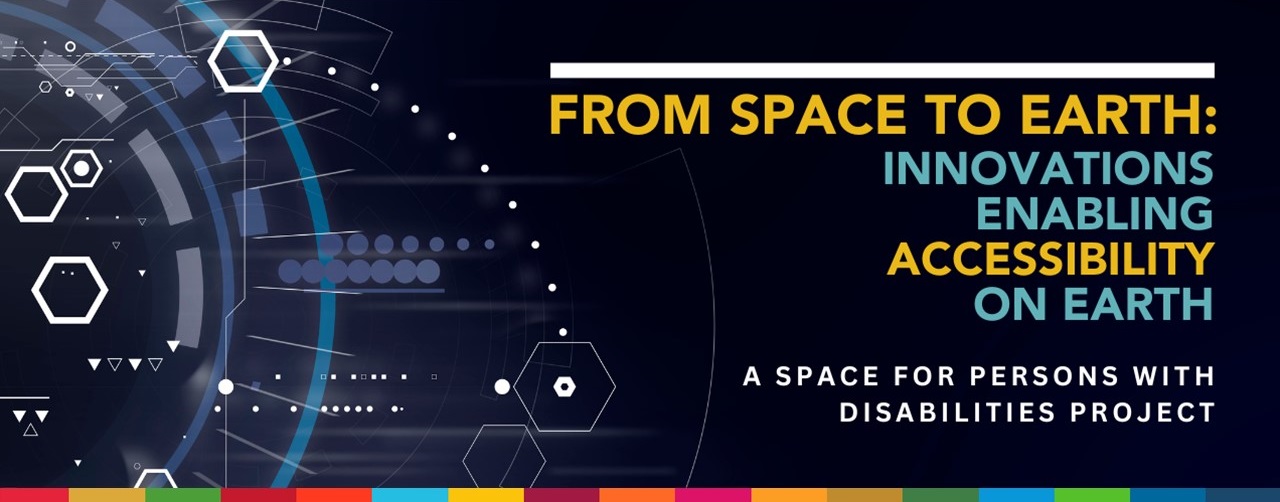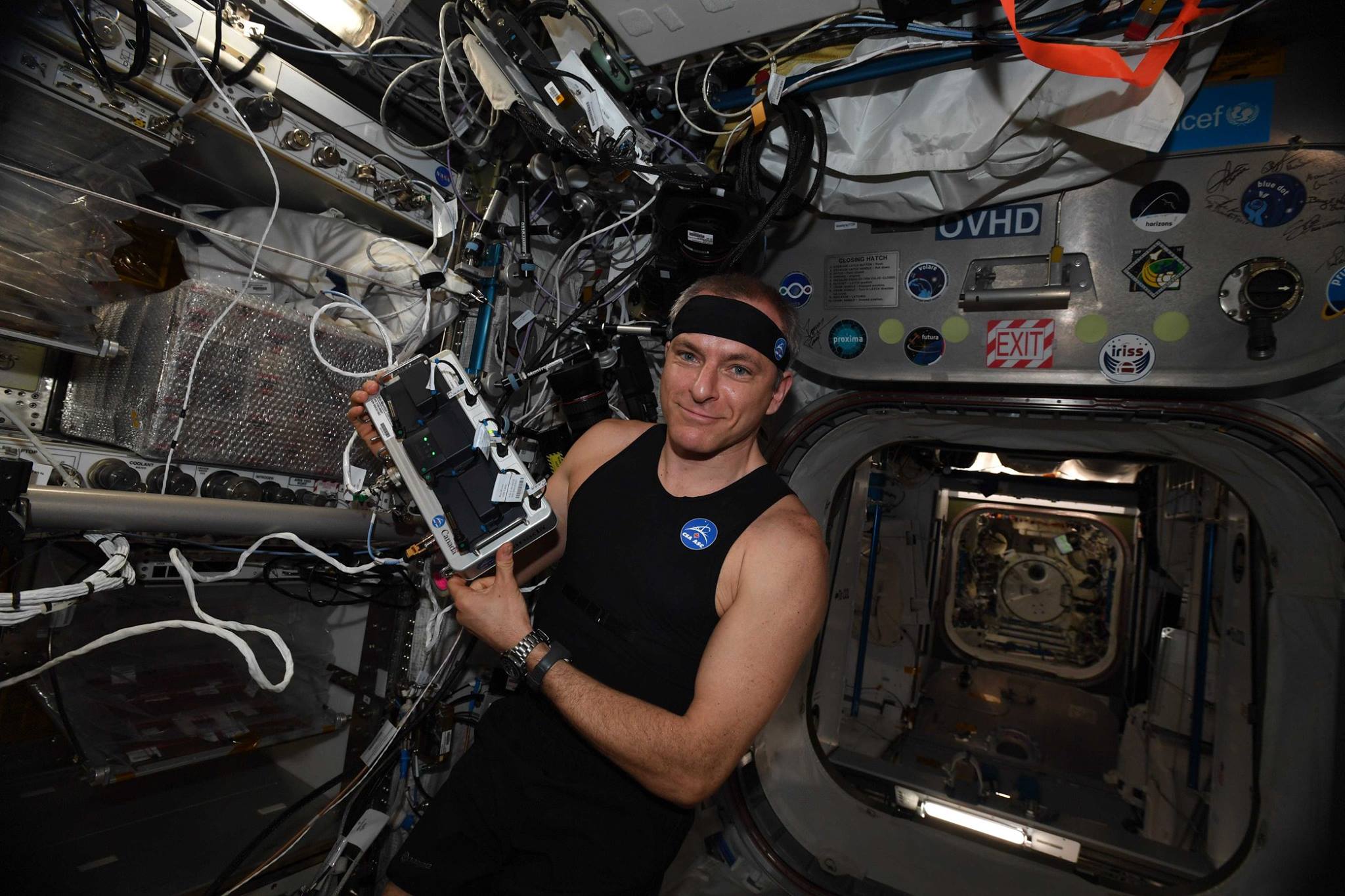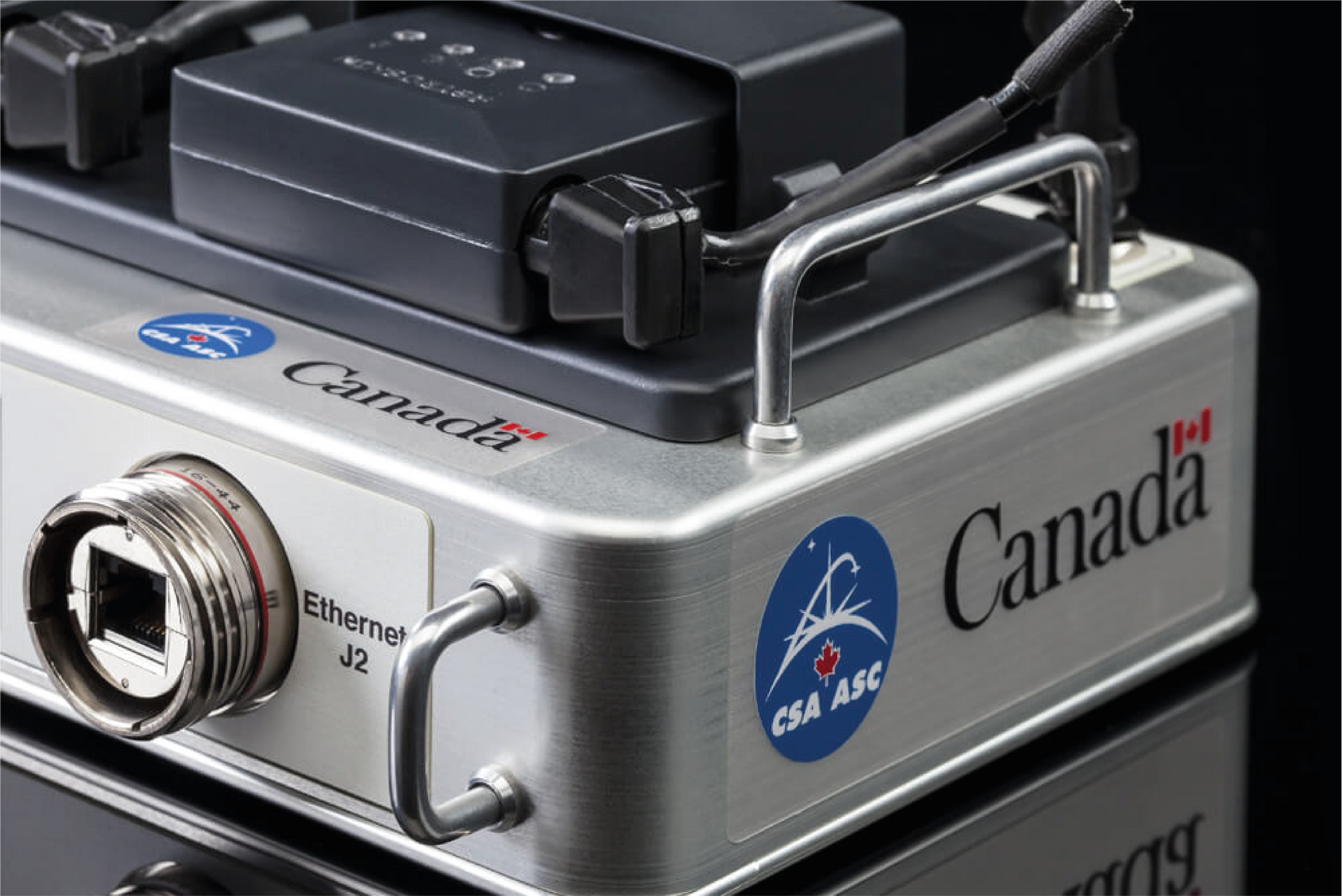- Continue Shopping
- Your Cart is Empty
UNOOSA Webinar on Nov 9th 2023
The UNOOSA (United Nations Office of Outer Space Affairs) has invited Hexoskin's CEO Pierre-Alexandre Fournier to speak about medical research conducted aboard the International Space Station with Astroskin wearable sensors.
The webinar entitled "From Space to Earth: Innovations enabling accessibility on Earth" was live on Thursday November 9th, 2023, you watch a recording of the event here.
There are less than 700 astronauts who have visited space from the time Yuri Gagarin reached orbit for the first time in 1961 to now in 2023. Most of these astronauts were selected to have none or few health conditions.
With space more accessible than ever, we expect thousands of people to visit space in the coming decades on suborbital and orbital flights. Many of these new astronauts who will visit space to work or as travellers will have health conditions or disabilities.
Health research conducted in the space station today with Astroskin health sensors helps better understand the risks and mitigation strategies to make space more accessible. It also helps better understand the effects of aging on human performance: microgravity has effects on the cardiovascular and musculoskeletal systems analog to accelerated aging.
About the UNOOSA
The United Nations Office for Outer Space Affairs (UNOOSA) works to promote international cooperation in the peaceful use and exploration of space, and in the utilisation of space science and technology for sustainable economic and social development. The Office assists any United Nations Member States to establish legal and regulatory frameworks to govern space activities and strengthens the capacity of developing countries to use space science technology and applications for development by helping to integrate space capabilities into national development programmes.
Astroskin set to be used in Space by Private Astronaut Mark Pathy
 Astroskin will soon be getting another ride to Space, thanks to Canadian Private Astronaut Mark Pathy and the first-ever private mission to the ISS, Ax-1, organized by Axiom Space. The Ax-1 space mission is set to send a crew of four private astronauts to the International Space Station (ISS) on board a SpaceX Crew Dragon. Set to launch in April 2022, Ax-1 is a 10-day mission where at least eight days will be spent inside the ISS to conduct several research experiments including research on the effects of microgravity, chronic pain, and sleep disturbances. Mark will be joined on Ax1 by fellow crew members Eytan Stibbe from Israel, Larry Connor, and Michael Lopez-Alegria from the United States.
Astroskin will soon be getting another ride to Space, thanks to Canadian Private Astronaut Mark Pathy and the first-ever private mission to the ISS, Ax-1, organized by Axiom Space. The Ax-1 space mission is set to send a crew of four private astronauts to the International Space Station (ISS) on board a SpaceX Crew Dragon. Set to launch in April 2022, Ax-1 is a 10-day mission where at least eight days will be spent inside the ISS to conduct several research experiments including research on the effects of microgravity, chronic pain, and sleep disturbances. Mark will be joined on Ax1 by fellow crew members Eytan Stibbe from Israel, Larry Connor, and Michael Lopez-Alegria from the United States.
M. Pathy, aged 52, is the CEO and founder of the investment firm MAVRIK CORP. He is recognized in Montreal, the city where he resides, to support several causes as a philanthropist. Married and father of three children, Mark Pathy decided to leverage his participation in this mission to collaborate with the Canadian Space Agencies to conduct experiments in microgravity that are a priority for children’s and universities. 
As a Mission Specialist, he will be taking part in a total of 12 science research projects in partnership with six Canadian universities and their investigators, including clinician-researchers at The Montreal Children’s Hospital and Child Health Research at the Research Institute of the McGill University Health Centre and become the first private Astronaut to wear Astroskin on board the International Space Station. Pathy will be funding himself the research conducted in Space and contribute to generating results and potential applications on earth that would have taken more time to be realized under the current Canadian space program.
Going to space involves months of planning. Canadian Private Astronaut Mark Pathy has been busy training at NASA Johnson Space Center ahead of the launch.
Pathy and his crew already took part in training exercises and will now embark on seventeen weeks of training to get ready for the mission. We look forward to following him and the Ax-1 mission in the coming weeks and months.
Japanese Astronaut Aki Hoshide (JAXA) Wears the Astroskin Bio-Monitor in the International Space Station
Japanese Astronaut Aki Hoshide was the 5th astronaut to wear the Astroskin Bio-Monitor system aboard the International Space Station last week. Astronauts use the Astroskin in space since 2019 to participate in various research studies, including "Vascular Aging", a project lead by University of Waterloo researchers.

Many more astronauts are scheduled to use Astroskin in space. The system is available to all participating space agencies and research universities. The most recent Astroskin payload was launched with SpaceX's mission CRS-23 on August 29th, 2021.
Microgravity affects fluid movements in the body and heat transmission (in the absence of convection movement in microgravity). This triggers physiological phenomena impossible to monitor on the ground and tests our models of human physiology. The Astroskin Bio-Monitor system gives scientists a tool to observe these phenomena in space. It also prepares us to maintain crew health during long space missions beyond low earth orbit (LEO), to the Moon and Mars.
A Brief History of the Astroskin
Here's a list of space launches that carried Astroskin payloads:
- SpaceX CRS-16 (December 5th, 2018)
- Cygnus NG-11 (April 17th, 2019)
- SpaceX CRS-18 (July 25th, 2019)
- SpaceX CRS-19 (December 5th, 2019
- SpaceX CRS-20 (March 7th, 2020)
- Cygnus NG-14 (October 3rd, 2020)
- SpaceX CRS-21 (December 6th, 2020)
- SpaceX CRS-22 (June 3rd, 2021)
- SpaceX CRS-23 (August 29th, 2021)
The Astroskin Vital Signs Monitoring Platform is also used on Earth on industrial projects and scientific research.
Information about Astroskin missions aboard the ISS:
https://lsda.jsc.nasa.gov/Hardware/hardconfig/3065
https://directory.eoportal.org/web/eoportal/satellite-missions/i/iss-bio-monitor-analyzer
Hexoskin at the Virtual MedTech Conference: Sessions Explore Everything from Outer Space to the Hospital of the Future
Hexoskin's CEO Pierre-Alexandre Fournier joined astronaut David Saint-Jacques and other panelists this week to discuss innovation in space medicine at the Virtual MedTech Conference.

 After 20 years of continuous human presence on the International Space Station, countries from around the world are getting ready to send humans farther into our solar system, beyond Earth's orbit. Technologies required to support long-duration missions, such as to Mars and back to the moon, will be critical to the next 50 years of space exploration.
After 20 years of continuous human presence on the International Space Station, countries from around the world are getting ready to send humans farther into our solar system, beyond Earth's orbit. Technologies required to support long-duration missions, such as to Mars and back to the moon, will be critical to the next 50 years of space exploration.
The Canadian Space Agency, numerous innovative Canadian medical technology companies and the National Research Council of Canada, are performing key research to develop and incorporate novel medical devices solutions for long-duration human spaceflight.
Cutting-edge microgravity research and space-relevant clinical expertise are critical to ensure an autonomous crew health care system. Canadian scientists, clinicians and specialists have developed and demonstrated new devices for remote clinical care including point of care diagnostics and real-time astronaut monitoring.
Among these innovations, Hexoskin has launched the wearable Astroskin Bio-Monitor system to the International Space Station in 2018 to monitor astronaut's vital signs. The system is used since for medical research in micro-gravity but also for research on Earth by a wide community of clinicians working in universities and research centers around the world.
The video of the MedTech Conference panel has been published and is available on the conference platform for attendees here: https://medtechvirtual2020.pathable.co/meetings/virtual/v98noBALBh3R4Xa5e
To learn more on Astroskin Vital Signs Monitoring Platform, Download Astroskin Product Specifications or contact us.
Advancing space medicine knowledge aboard the ISS. Another space mission for Astroskin / Bio-Monitor!
Earlier this month, European Space Agency astronaut Luca Parmitano conducted validation tests on-orbit and wore the Astroskin garment and headband connected to the data unit for his first 72-hour monitoring experience.
Luca Parmitano also conducted maintenance operations for the Astroskin / Bio-Monitor that was deployed on the ISS orbiting lab, last December by Canadian Astronaut David Saint-Jacques.
Although the ISS is equipped with health and life sciences research tools, the existing instrumentation for continuous and simultaneous recording of several physiological parameters was lacking. To address this issue, the Canadian Space Agency's Bio-Monitor Commissioning activity uses the Astroskin / Bio-Monitor system; a complete vital signs monitoring platform coupled with a wearable garment capable of monitoring relevant physiological parameters in a non-invasive and non-interfering way during a normal day in space.
The physiological parameters which can be monitored consist of blood pressure, peripheral blood oxygen saturation, 3-lead ECG, respiration, skin temperature, and activity, will help push further our understanding of Vascular aging and Human Physiology in space.
Venturing into the environment of space, microgravity can have negative effects on the human body. When astronauts return to Earth, their carotid arteries, which carry blood to the head and neck, appear to have aged 20 to 30 years. Artery walls become stiffer and thicker in space, the same as when people grow older on Earth.
“You can take extremely healthy, fit astronauts and put them in an environment that restricts their ability to do daily exercise, and they run the risk of developing insulin resistance that on Earth could lead to Type II diabetes,” said principal investigator Richard L. Hughson of Schlegel-University of Waterloo in Ontario
Now operational the Astroskin Bio-Monitor system is available for the next five years to conduct Health research in Space for all participating countries to the International Space Station.
Sometimes you wear the experiment: the Bio-Monitor smart shirt system measures vital signs like temperature, heart rate, respiration and movement, and transmits the data to a tablet application. #MissionBeyond @csa_asc pic.twitter.com/2h6lmRUyHH
— Luca Parmitano (@astro_luca) 19 août 2019
Source:
NASA. 2019. ISS Daily Summary Report - 8/14/2019
NASA. 2019. ISS Daily Summary Report - 8/13/2019

About Hexoskin
Since 2006, Hexoskin’s mission is to develop sensors and health data infrastructure to generate clinical grade real-world evidence. The Astroskin demonstrates once again Hexoskin’s leadership in providing the industry leading sensors, software, and AI to push further our understanding of human physiology on earth and in space.
Government of Canada confirmed Canada's commitment to Nasa Lunar Gateway program
The government of Canada confirmed today, Thursday, February 28, 2019, Canada's commitment to the Lunar Gateway space mission led by the United States, to give Canada's space program a new momentum. The Prime Minister of Canada Justin Trudeau announced historic investments in Canada’s space program. The Government of Canada will invest $2.05 billion over 24 years for Canada's space program. It will help grow innovative Canadian companies of all sizes by supporting the development of new digital and artificial intelligence-based technologies, and by opening new markets for Canadian businesses (Prime Minister's Office).
This investment will also give Canadian astronauts the opportunity to participate in missions to space and our scientists a chance to conduct cutting-edge research that cannot be done on Earth.
At Hexoskin, since we started working with Canadian Space Agency in 2011, we designed medical monitoring systems with the goal of fulfilling the autonomy requirements of future missions to the Moon and Mars. The spillover effects of space exploration projects are applicable beyond human spaceflight and find applications on earth that benefit humanity.
The technologies we're developing will allow a greater number of people to access regular care, especially patients with chronic cardiovascular and respiratory diseases. The software being developed for medical autonomous systems has the potential to deliver automated health services, affordable and accessible 24/7.
After today's announcement, we hope that Hexoskin will be able to contribute to future missions to the Moon, by supplying innovative medical technologies for crew members taking the trip.
Deployment of the Bio-Monitor in Space by Canadian Space Agency Astronaut David Saint-Jacques (CSA)
This week, Canadian Space Agency Astronaut David Saint-Jacques deployed and tested for the first time in space a new Canadian technology: the Bio-Monitor System.
This advanced smart shirt is designed to measure and record vital signs in microgravity environment. It will help keep an eye on astronauts' health and enable medical research in space by continuously measuring physiological data.
The Canadian Space Agency's Bio-Monitor is designed to easily send information to the ground, where scientists can monitor astronauts' physiology around the clock as they orbit the planet. Once operational it will be available for the next five years to all participating countries to the International Space Station.
To learn more: http://asc-csa.gc.ca/eng/missions/expedition58/default.asp.
Photo: CSA/NASA
Astroskin / Bio-Monitor Successfully Launched to Space aboard Space X Dragon Spacecraft
Launch successful! En route to the International Space Station! The Bio-Monitor Astroskin system is part of the payload that was launched today in a Dragon spacecraft on a Falcon 9 rocket from Cape Canaveral, Florida.
About Hexoskin
Since 2006, Hexoskin’s mission is to develop sensors and health data infrastructure to generate clinical grade real-world evidence. The Astroskin demonstrates once again Hexoskin’s leadership in providing the industry leading sensors, software, and AI to push further our understanding of human physiology on earth and in space. To learn more on Astroskin Vital Signs Monitoring Platform download Astroskin Product Specifications document.
Contact our team to order Astroskin
Live Webcast - Join Us for the Bio-Monitor (Astroskin) launch to Space on December 4th!
We are happy to invite you to our live webcast on December 4th, that will broadcast the Astroskin launch to Space aboard Space X Dragon Cargo vehicle. Before the launch, Hexoskin's co-founders will discuss the history of the development of the Bio-Monitor system as well as a few case applications in Space and on Earth.
The Astroskin system is based on the Bio-Monitor designed for the Canadian Space Agency (CSA) to monitor the astronauts’ health in space on the International Space Station (ISS). It will be operational in space and available for all ISS participating countries to conduct space research for the next five years.
LIVE WEBCAST:
Astroskin Launch to the ISS aboard SpaceX Dragon Cargo
December 4, 2018, at 1:25 PM (EST)** - via the Zoom Video Conferencing software
** In case of postponement of the launch, you will receive a notification
with a new broadcast schedule.
Speakers:
- Pierre-Alexandre Fournier, CEO & Co-Founder, Hexoskin
- Jean-François Roy, CTO & Co-Founder, Hexoskin
Guest Speaker:
- Professor Richard L. Hughson Ph.D., University of Waterloo
If you are unable to attend, you can still register and we will send you the recorded webcast by email afterward.
We look forward to your presence for this special event!

About Hexoskin
Since 2006, Hexoskin’s mission is to develop sensors and health data infrastructure to generate clinical grade real-world evidence. The Astroskin demonstrates once again Hexoskin’s leadership in providing the industry leading sensors, software, and AI to push further our understanding of human physiology on earth and in space.
Contact our team to order Astroskin
The Bio-Monitor to launch to the International Space Station
The Bio-Monitor, designed by Hexoskin for the Canadian Space Agency (CSA) to monitor the Astronauts' Health in Space aboard the International Space Station (ISS) is finally launching to Space! The Bio-Monitor System is scheduled to launch aboard a SpaceX Dragon cargo spacecraft on December 4, 2018, at Cape Canaveral Air Force Station in Florida.
David Saint-Jacques will be the next Canadian astronaut to live in the ISS. His first mission to the ISS is scheduled to launch on December 3, 2018. David Saint-Jacques will be conducting tests and experiments with the Bio-Monitor platform.
Last week, the Canadian Space Agency announced the award of an additional contract to Carré Technologies (Hexoskin). The Hexoskin team is excited to continue an adventure that started in 2011 with the Canadian Space Agency and wishes the best of luck the astronaut David Saint-Jacques for his mission.
Learn more at:
http://www.asc-csa.gc.ca/eng/sciences/bio-monitor.asp
About Hexoskin:
Founded in 2006 in Montreal, Carré Technologies Inc. (Hexoskin) is involved in the development of non-invasive sensors, software & applications, data science & AI services. Hexoskin’s mission is to record and organize personal health information and make it accessible and useful.
Hexoskin’s provide solutions and services directly to customers & athletes; and through B2B contracts in security, defense & aerospace agencies, pharmaceutical companies, academics, and healthcare organizations.
Hexoskin obtained its first contract from the Canadian Space Agency in October 2011. The Bio-Monitor demonstrates once again Hexoskin’s leadership in providing industry-leading sensors, software, and AI to push further our understanding of human physiology on earth and in space.
In September 2018, Hexoskin launched the Astroskin Research Platform to support various projects and health research on earth. The Astroskin is based on the Bio-Monitor and is further adapted to be used on earth. Astroskin offers an end-to-end platform to collect real-world evidence with space-grade garments that include sensors embedded in the fabric such as a 3-lead electrocardiogram, breathing sensors, pulse oximeter, blood pressure, skin temperature, and activity sensors.
Contact us to order Astroskin for your project.







